Into the unknown
The significance of Space exploration during my childhood.
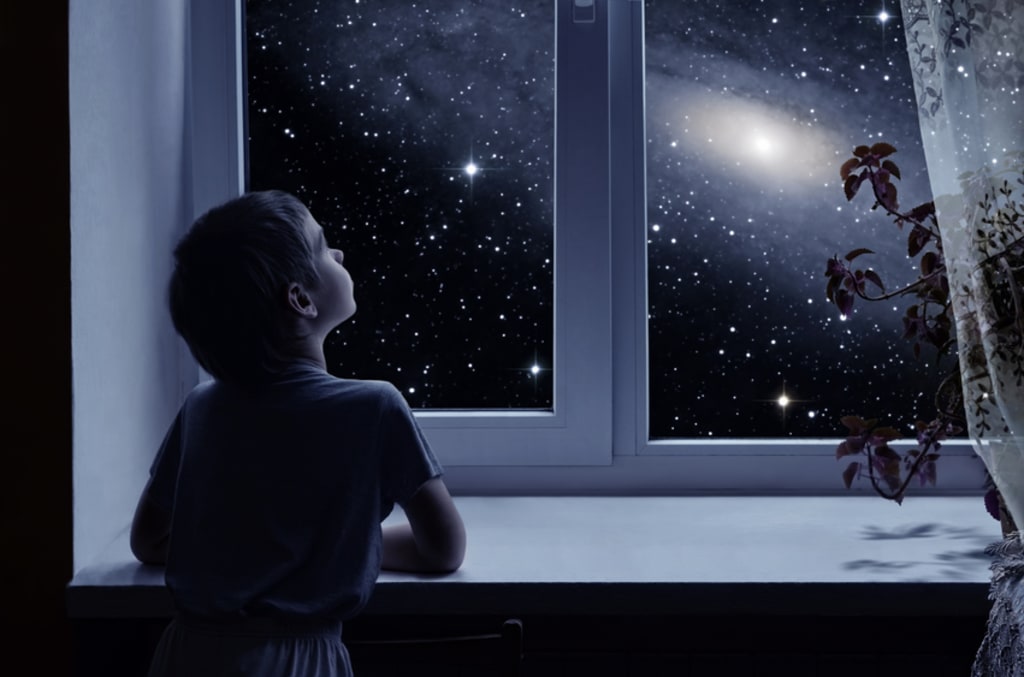
"The earth is the cradle of humanity, but mankind cannot stay in the cradle forever!” Said Konstantin Tsiolkovski, the famous scientist that pioneered space flight more than a hundred years ago. Space exploration has always been something that makes my imagination soar into new heights.
While being in school, I remember asking my Mom and Dad if they remember the day when Apollo 11 reached its destination, the Moon. They told me that it was a special day, they were both in school, the teachers arranged everything to make the kids witness this milestone in human history. A special room was arranged, a black and white tv set placed over a desk was their window to the future and beyond; this time it was not a movie, it was something that changed their lives forever.
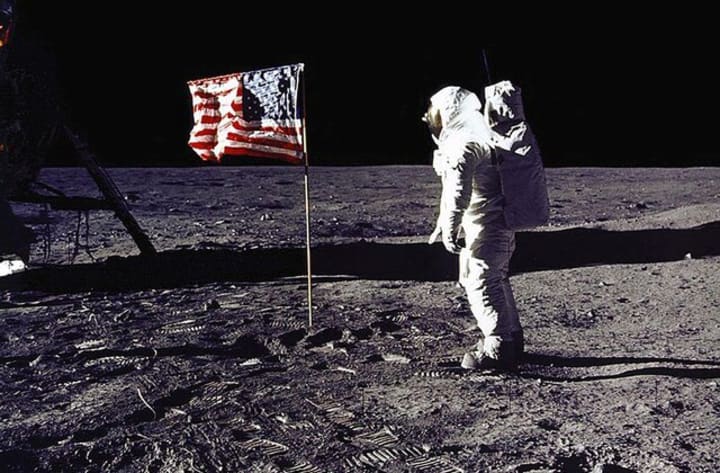
The Challenger ordeal.
My parents gazed at the television with awe while Neil Armstrong walked the lunar surface. I wanted to have a similar experience, on January 28, 1986. I was at home, waiting anxiously for the countdown on tv for the Challenger Space Mission, full of excitement I thought about how lucky I was to be able to witness something like it. On my parent’s room, I was counting the minutes for the moment of truth. Don’t ask me why I thought that it was important and transcendent. In my young and easily impressed mind, I just wanted to have a story to tell, to be one of those millions that watched the Challenger take-off. I was almost 8 years-old at that time, completely unprepared to what happened afterwards.
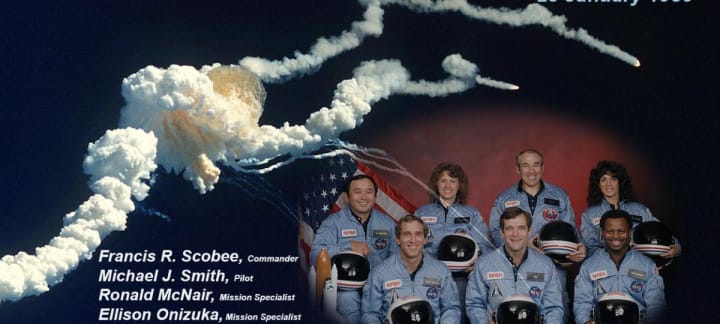
Seeing the big column of smoke after the explosion, I turned around to see my Mother. She had her hands over her face, she stood there in disbelieve, speechless. I remember myself trying to assimilate what just happened. I remember the color and the silence, the smoke, the debris (That in my tv screen looked like confetti falling randomly from the sky.) I asked… “Mom, they got parachutes right?” She simply added “Yes… I think I saw them jump, let wait for further news."
THE VASTNESS OF SPACE AND BEYOND.
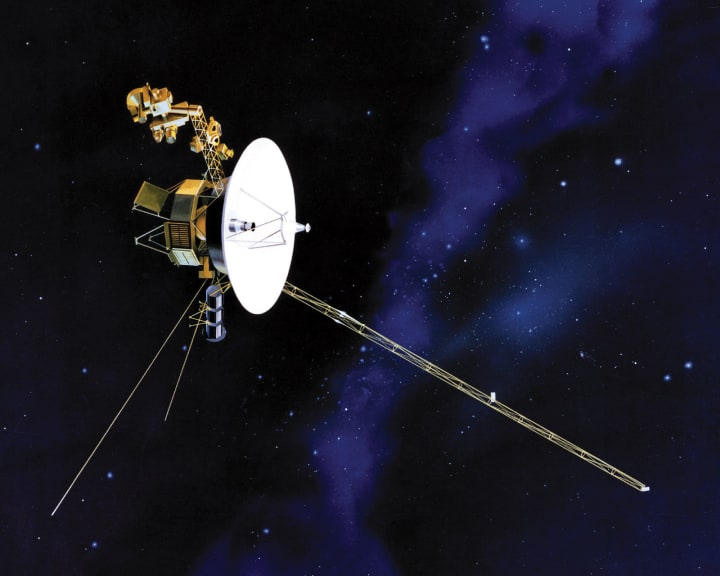
Voyager 1 and 2.
While in my teens, I heard some news about another landmark in space exploration that took place in 1977, the launch of the space probe “Voyager 1 & Voyager 2”, What fascinated me is the fact that it has a message for other civilizations. N.A.S.A. Using the latest technology available at that time, planned to use the orbit of the planets to swing the spacecraft into the next celestial sphere. The first launch took place in August 20,1977. The space probe “Voyager 2”, was the first in line, it was called “Voyager 2” Because it was planned to reach Saturn after “Voyager 1”, based on the trajectory traced by scientist prior to the official launch.
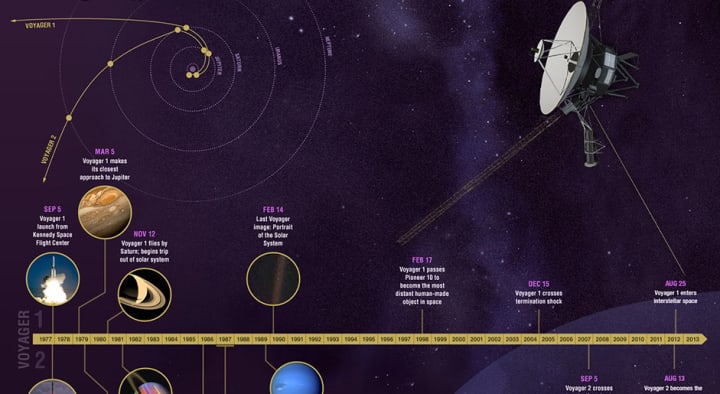
A message to those out there.
Inside each space probe there’s a golden disc that carry a gift, a salutation to any form of life that they might encounter on its way. The message is carried by a 12-inch gold plated disc, it contains sounds and images representing diversity of life and culture on earth. Besides the 115 images, they added musical selections from different cultures. Among them, the outrageous Beethoven’s 5th symphony, and the breathtaking Stravinsky’s “Rite of Spring” They also added greetings in 53 languages. Inside the probe, there’s everything they need to play the gold record, phonograph and needle, with instructions and space parts, they even included the blue prints of its construction.
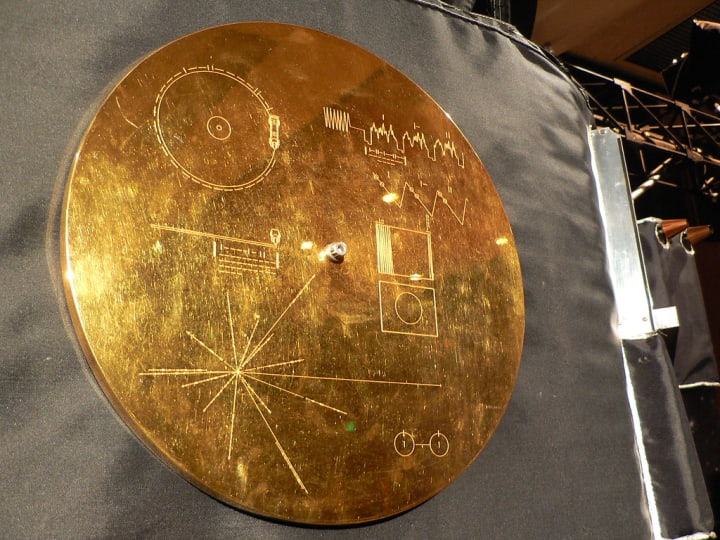
Into the void.
Different studies show that Voyager 1 is in Interstellar space right now, and Voyager 2 is in Helioshealth, the last layer of Heliophere; where solar winds are slowed down by the pressure of interstellar gas. Voyager 1 has become the farthest spacecraft ever launched; It’s the only one that has passed the solar system, bringing new insights about space exploration and the vastness of the universe. Due to its distance from our planet, it takes more than 18 hours to receive its signal here on earth.
THE GREATEST SPACE MISSION OF OUR TIMES
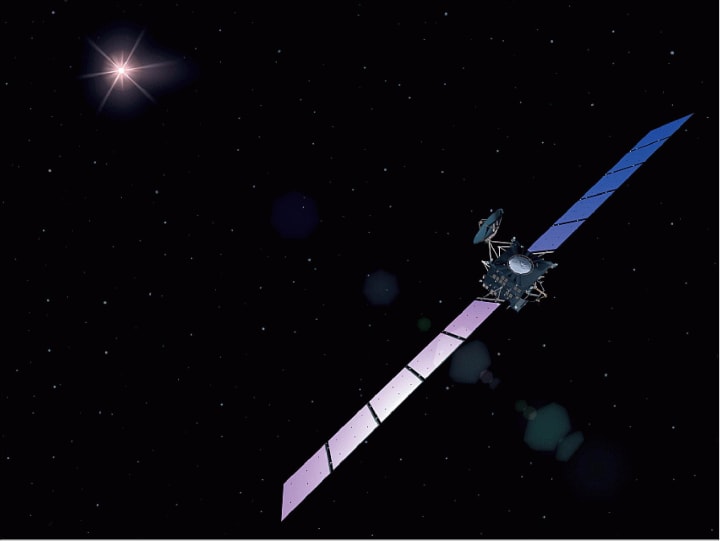
Rosetta and Philae.
Another milestone in space exploration is without any doubt the Rosetta program. For the first time in the history of humankind; a spacecraft was able to orbit an asteroid, follow its trajectory around the sun, and finally send a probe to the nucleus of an asteroid. The Rosetta spacecraft was launched by the European Space Agency on March 2014. Bringing with him a probe called “Philae”, (Named after the “Philiae Obelisk” discovered in Egypt in 1815, right under the ruins of the Temple of Isis, on the island of Philiae.) The scripts of the obelisk have a bilingual message, that along with the Rosetta stone, helped to decipher Egyptian hieroglyphs. With this program, they want to bring new theories on how our planet was created, and be able to solve the mystery of how life started on planet earth.
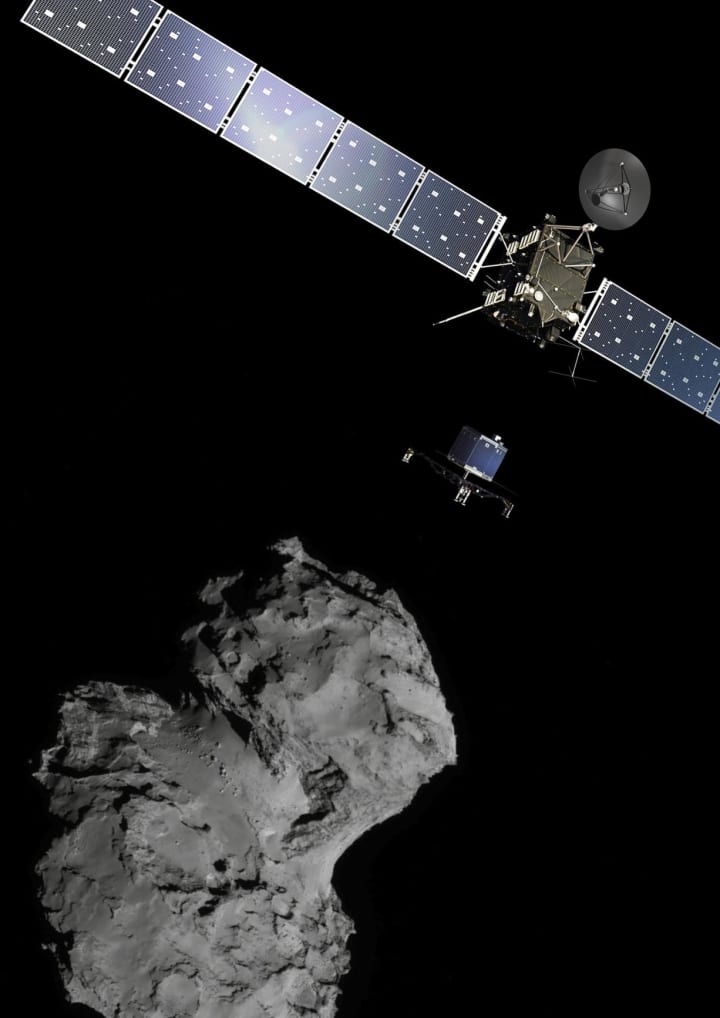
Rosetta’s pilgrimage.
Rosetta travelled in the inner solar system for about 10 years to finally meet its destination, the comet 67P/Churiumov-Geramimenko. The landing of the probe Philae didn’t go as planned, it bounced for about a mile to finally reach its resting spot; pitifully not in the best position to get the most of the sun rays it needed to run efficiently. Rosetta studied the surface the comet in depth, while Philae was doing its duties over the surface. Thanks to the data gathered from the probe on the short it functioned, the E.S.A. (European Space Station) was able to determinate that the asteroid is not solid. Although it looks like a rock, it is made from a much littler material, so light, that if landed on water, it could float.
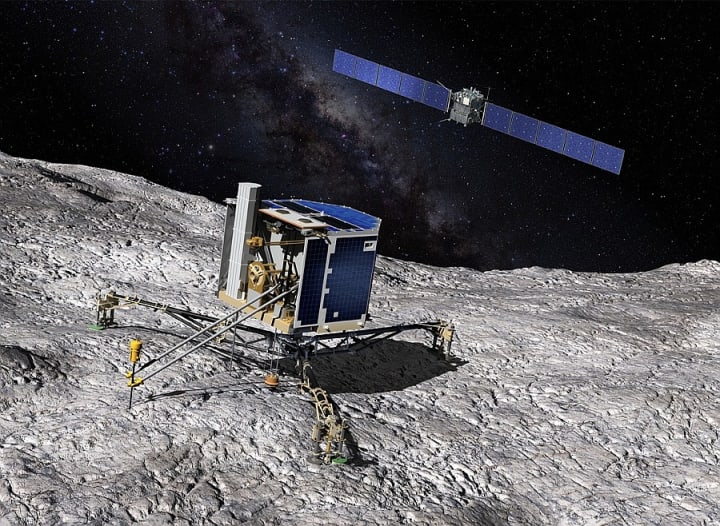
One of the greatest questions scientist have here on earth is, from where water on earth came from? Thanks to Rosetta, scientist could measure and even digitally test water vapors. They were baffled, the vapors were not alike anything on planet earth, creating new theories on how our oceans were created.
Journey’s end.
After a long 12 years’ mission, on Sept. 30, Rosetta landed on comet 67P/Churiumov-Geramimenko, “This is it”, Said the mission manager Patrick Martin, “I declare the primary mission operations ended for Rosetta.”, This Mission left a lot of data for scientist to analyze, they are aware that the long mission was a true achievement of human cooperation. The amount of data gathered by Rosetta is astonishing, it left a lot of work behind to be studied in depth.
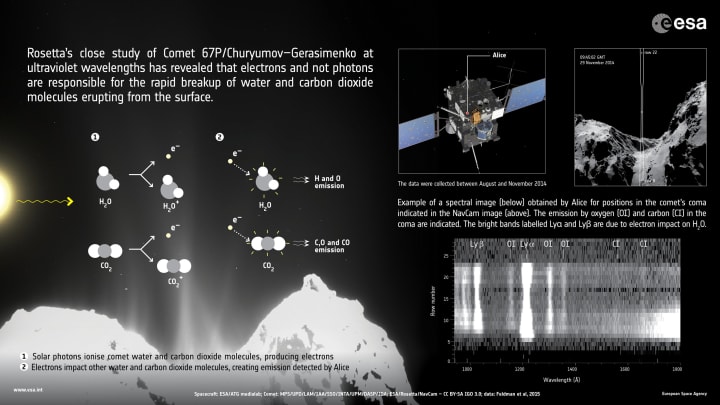
Seeing the future through the eyes of a child.
I remember very fondly those days when I was very into the progress of Rosetta and its discoveries. After that terrible experience while watching the Challenger ordeal, being able to follow Rosetta was total bliss. Technology helped me to fully appreciate, and make the most of the information I was able to grasp information on specialized websites. Who knows if I will be able to witness when humans walk the surface of Mars? Maybe a younger generation will ask me the same questions I asked my parents. Space exploration is without any doubt the next frontier, there’s so much to be discovered on our vast canopy of celestial bodies.

About the Creator
Giovanni Profeta
Swimming through life one stroke at a time.
Enjoyed the story? Support the Creator.
Subscribe for free to receive all their stories in your feed. You could also pledge your support or give them a one-off tip, letting them know you appreciate their work.


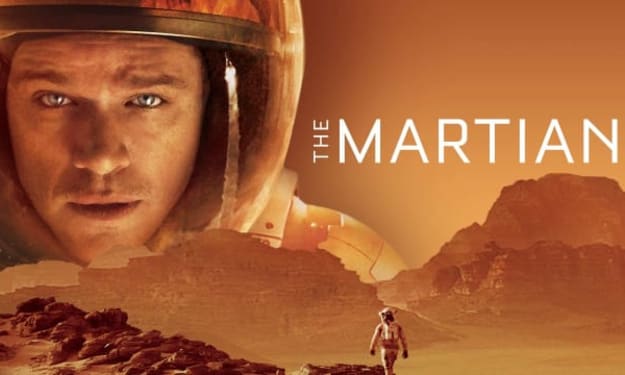



Comments
There are no comments for this story
Be the first to respond and start the conversation.